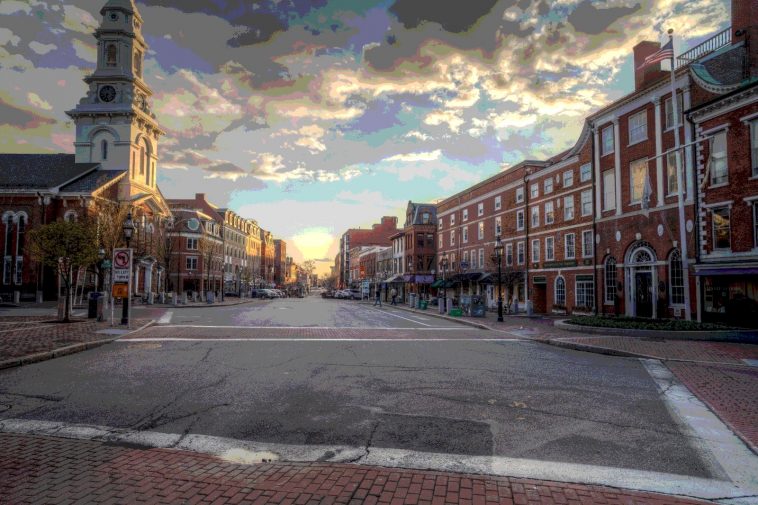Despite all the doom and gloom in the news, it is easy to forget that every crisis has a silver lining. Thankfully, COVID19’s death impact has not devastated the world as badly as previous pandemics, but the economic and psychological impact will have ripple effects throughout the coming decade. As the author of Epidemics and Society: From the Black Death to the Present, explains, “Epidemic diseases are not random events that afflict societies capriciously and without warning. On the contrary, every society produces its own specific vulnerabilities. To study them is to understand that society’s structure, its standard of living, and its political priorities.”
Unlike other crises, pandemics are unique in that they cause societies to reflect in ways they may have never before. Where the rich or influential might evade the effects of economic collapses or the trenches of war more easily, disease is a great equalizer, especially novel air-borne ones. Just take a look at some of the bizarre, anxiety-ridden videos that celebrities were posting last month. From Sam Smith’s pathetic sobs on the steps of his $14 million mansion to Madonna’s proclamation from a rose petalled bathtub that the CCP Virus goes after people even as rich, smart and talented as her. It is clear that every segment of society is in shock and reflection. Even things once taken for granted, like steady food supplies, are for the first time at risk of disruption.
As many historians have pointed out, one side-effect of pandemics is often a drain from urban areas into more rural ones and a burgeoning of “renaissance” culture. In regards to the current pandemic, one can’t help but wonder what is mulling over the minds of the predominantly city-dwelling Millennial. Will their slow trickle from large cities turn into a gush once society is up and running again? Where are they likely to move? Will the perceived totalitarian governments of California and New York further flounder from the Millennial drain? What will the impact on society be as Millennials book it out of the large cities? Will they be responsible for a Renaissance of the Great American Downtown or the burgeoning of Urban Shires?
Millennials Are Tired of New York and Big Cities
Starting around 2008, Millennials flocked to cities for university and early career development. Boston, New York, San Francisco, Los Angeles, and Washington, D.C. became the stomping grounds of these highly educated, ambitious, mimosa sipping, social climbers. Even despite the last decade’s lethargic economic growth, their battle with student debt, and their higher cost of living in cities, these young Americans were defined by their eagerness to make an impact and fast-track their careers.
Culturally, there was a great emphasis placed on New York and Californian cities as well. This was the generation that grew up watching movies and shows like The Devil Wears Prada, The Social Network, Sex and the City, The O.C., House of Cards, Portlandia, and Steve Jobs. This was the generation that grew up listening to “Empire State of Mind” by Jay-Z and Alicia Keys, “California Gurls,” by Katy Perry, and other more subtler odes to these two places. NYC, LA, SF, DC, Boston, and Silicon Valley were the sexy, affluent lands of movers and shakers. As such, this ambitious generation flocked there. Even to NYC which was relatively barren the years following 9/11.
As detailed by Time Magazine, “[o]f the 50 metro areas analyzed, most urban centers saw an increase in millennials from 2010 to 2015, while 11 cities saw a decline. New York City had the greatest increase in the total number of millennials, with 29,774 added from 2010 to 2015.”
Starting around 2017 this trend began to slow and in some cities reverse. With maturing tastes, sky-rocketing rents, intolerable public transportation, and the spread of vagrant tent cities, these young Americans were becoming increasingly frustrated by their expensive, low quality, dirty lifestyle.
Where Are Millennials Moving?
In late 2019, CNBC reported that: “Data released by the U.S. Census Bureau earlier this week show that some 27,000 millennials between the ages of 25 and 39 left big cities like New York, San Francisco and Houston in 2018 for greener, and less expensive, pastures… Chicago, Las Vegas, Washington, D.C. and Portland, Oregon, are also seeing large numbers of residents leave.”
By the end of 2019, cities with the largest Net Migration spikes of Millennials are:
- Dallas, Texas: +10,371
- Seattle, Washington: +8,007
- Portland, Oregon: +6,586
- Columbia, South Carolina: +6,554
- Norfolk, Virginia: +5,430
- Charlotte, North Carolina: +5,060
- Colorado Springs, Colorado: +3,368
- San Diego, California: +3,342
- Clarksville, Tennessee: +3,330
- Henderson, Nevada: +3,028
Source: SmartAsset
Looking at the list of top 10 states from that same study, one sees that even Arizona (+20,695) and New Hampshire (+6,719) made the list. Millennials are getting older, marrying, having children, and looking for homesteads. Many are even seeking out agrarian towns, weary of years of city life and still holding a grudge against the vapid sprawl of suburbia. Where once the razzamatazz of cities were what attracted them, now affordability, safety and quality of life do.
For those that have been toiling away their quarantine in shoebox sized apartments, the pastures of North Carolina, Tennessee, Colorado and Texas will likely seem a whole lot more greener. Even curiouser, how will this unique, often criticized generation affect American culture and communities as they pack their bags for rural areas and smaller cities?
Fly Over Country Now Has More to Offer Yuppies
Young Americans are realizing that the incomes, nightlife and career prospects that attracted them to places like NYC and LA are, in the end, not as enticing or unique anymore. Over the past decade, smaller cities have been catching up in terms of cultural offerings. Now, scanning lists of “America’s Coolest Cities” and articles of “Where Millennials are Moving,” names like Asheville, NC; Denver, CO; Madison, WI; and Louisville, KY are common.
As reported by Curbed, this generation is now looking for “place character.” In other words, places with history and heritage, which are in the process of revitalizing. Mid-sized cities, aware of young American’s search for this, have spent the past decades figuring out how to attract businesses and yuppies. From Virginia Beach, Virginia’s expansion of light rail to Louisville, Kentucky’s investment in expanding its park system, adding a convention center and hotels. This generation is finding its tastes (and financial goals) better met outside of Los Angeles, New York and San Francisco.
Igor Bronz, an NYC-based Engineer and co-founder of a green tech start-up, agrees:
“If I wasn’t forced to work in NYC, I’d consider moving somewhere rural. Never suburbs, I can’t stand suburbs. In my opinion, suburbs are a cancer and a sign of American cultural decline, truly the worst of both worlds. You often have to deal with troublesome HOAs, nosy busybodies and ridiculous regulations, but enjoy none of the cultural institutions, high-end entertainment and convenience common to big cities. You’re still driving everywhere as you would in a rural setting, but don’t have the sheer land and freedom to do as you please. Having to drive 15 minutes to the local shopping plaza Whole Foods/Wegmans as my only activity besides work and staying at home sounds like a personal hell to me. These places have no culture, no character, and are all the same except for average income levels. Have you ever heard of a person claiming that they were proud to come from <insert middle class suburb>? I sure haven’t. People can speak poetically about growing up in a rural setting or a city, but never a surburb. I’m convinced that the mental turmoil resulting from suburban living is one of the factors that prompts people to go on shooting sprees.”
It is clear, Millennials are different than other generations but how will their unique traits manifest in the coming decade? Where Boomers and the Greatest Generation flocked to suburbs to escape the decay of cities in the middle of last century, many Millennials hold corporate, soulless, cookie-cutter communities with vehemence. Given their entrepreneurial, scrappy mentality they will likely become involved, active members of their community, either opening small businesses or demanding gentrification of cities once in a lull. Look at places Asheville, Denver, Austin, Louisville, or even the “Urban Shires” of Vermont and southern New Hampshire. As Millennials trickle in, small businesses, boutiques, arts, culture and city greening slowly blossoms. For the coming decade, it seems there could very well be a burgeoning of Urban Shires and American Downtowns across the country.




